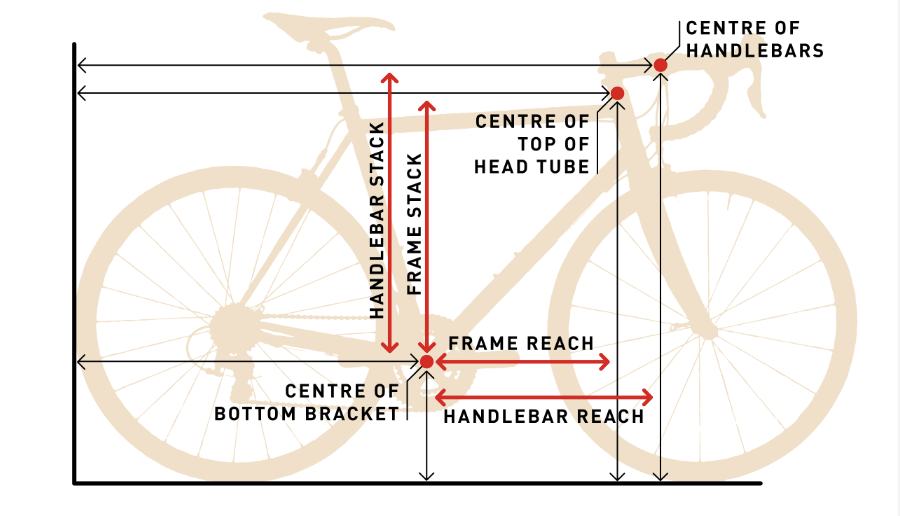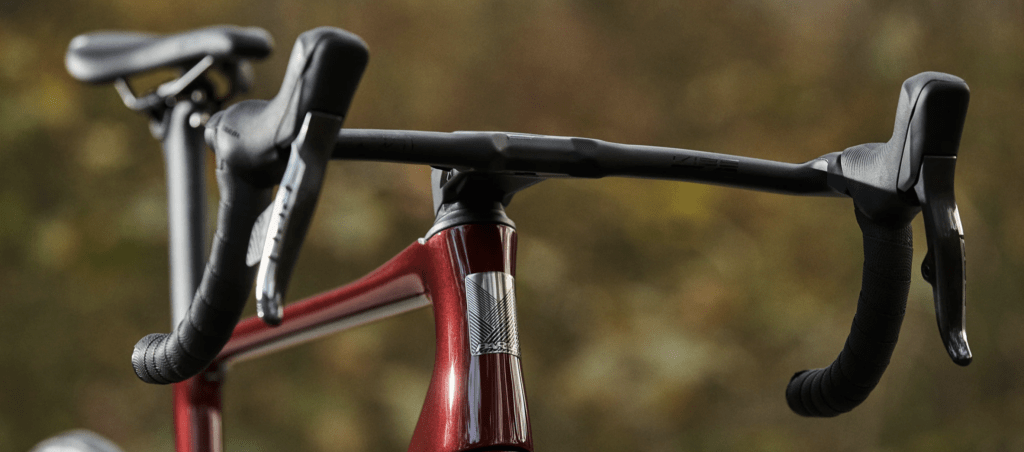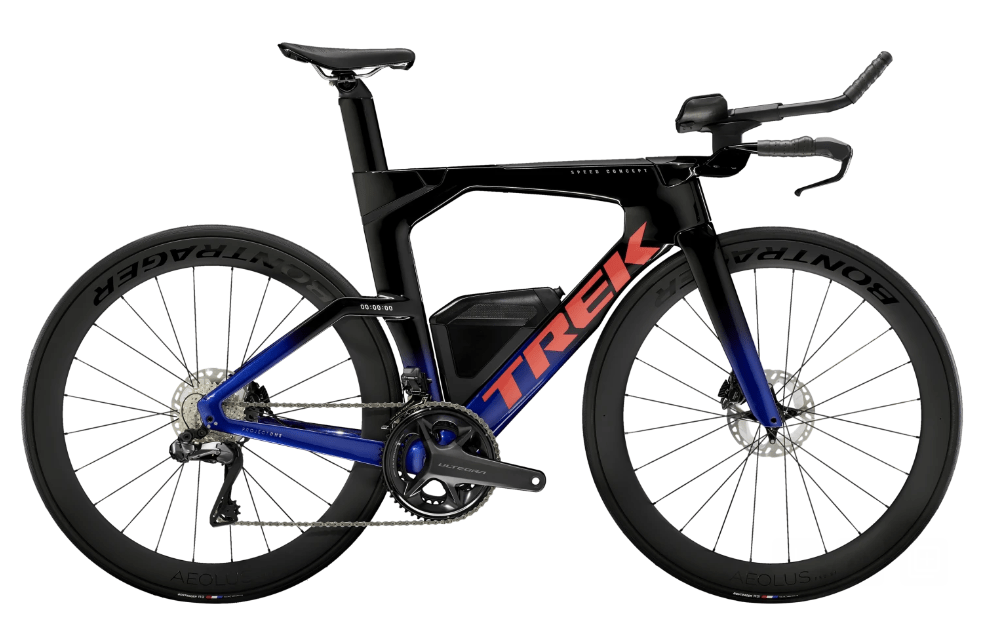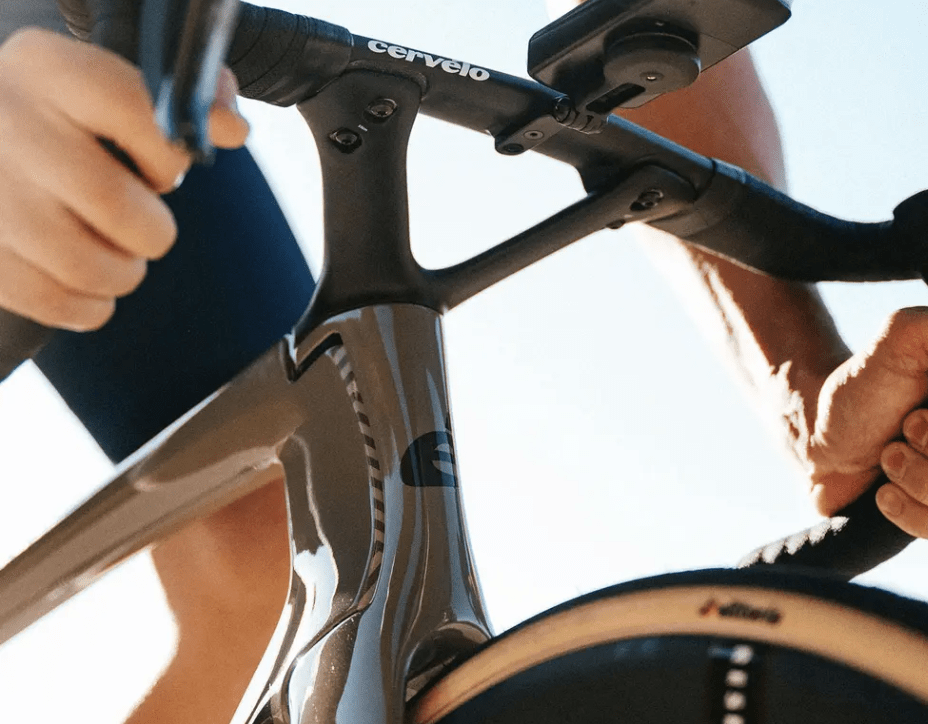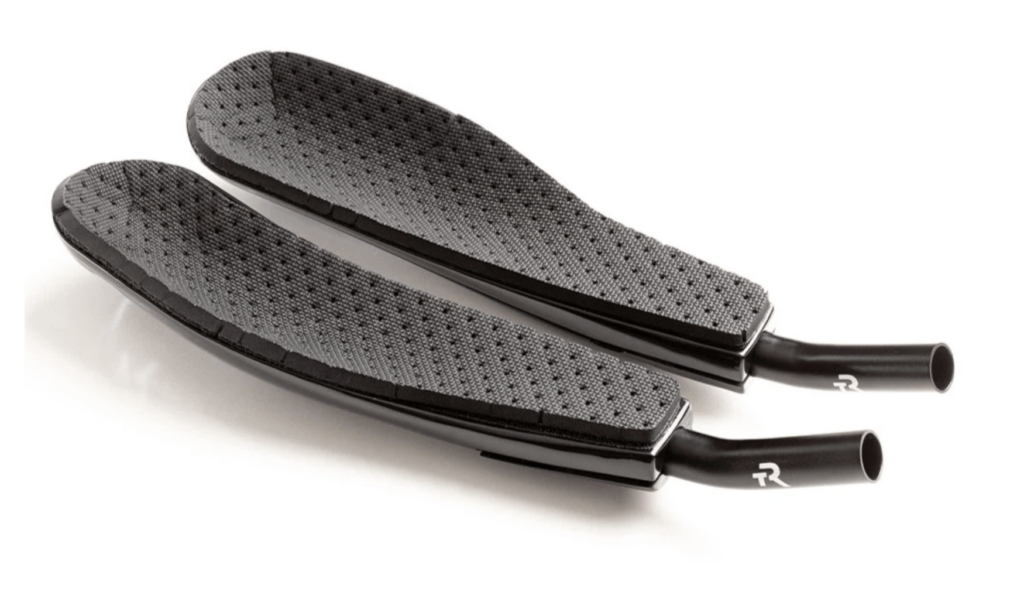Your Bike Has A Stack and Reach, But You Don’t
Planning to purchase a new bike for the 2025 season starts now. Determining your riding position first, so you know which bikes match your positioning needs, is more important than ever. While we’ve always been stressing this at Fit Werx, it’s been interesting to find the industry once again trying to simplify and bypass this crucial process in order to simplify the purchase of the most complicated piece of athletic equipment you likely own. While it may feel easier to just order the bike and deal with the fitting later, it can be very costly and time-consuming to do so. Buying your bike before a fitting remains akin to designing your house after you have it built – it is simply doing it in the wrong order.
A bike fitting from a qualified bike fitter will help you determine which bikes can be built to match your position, but it doesn’t stop there. Once well-matched frame geometries are known, it is just as important to know which size components are needed to match your position. This includes stem length, handlebar width and reach, crank length, saddle selection, as well as seatpost length and setback. And this doesn’t even touch on gearing and tire selection to suit your use. As tempting as it may be to swap these parts out after purchase, it is more costly than ever to do so. The benefits of a rider first bike fitting in advance of getting a bike are more substantial than ever.
The Potential Costs of Not Getting a Good Bike Fitting Before Buying a Bike
Illustrations of how costs can spiral if you don’t get fit first and use that information to buy a properly configured bike for your needs are exemplified in these recent bikes we have worked on.
Example 1 – Road Bike:
A fit client purchased a new Parlee RZ7 road bike through another bike dealer and brought it into the shop to have it adjusted to match his prior fitting through us. One great advantage of getting a Parlee is that they offer rider-matched services on their bike from the factory. However, not all dealers provide this, and, in this instance, it didn’t happen. Adjusting the bike to match his riding position required the following changes:
- Cockpit: A new Shimano Pro Vibe EVO integrated handlebar with the proper bar width and stem length and angle. The Pro Vibe EVO is a beautiful looking, sleek, and comfortable handlebar to ride with and it’s also very light. The trouble is if either the handlebar width or integrated stem length needs to change the whole cockpit needs to be changed. That’s a $640 system that needs to be purchased before even addressing the labor to swap it out – which can be well over 3 hours.
- Fork: The fork had been cut short and there were not enough spacers underneath the stem to allow us to get the proper handlebar height. This particular handlebar not only has a more downward angle to the stem than typical, but the handlebar itself sits lower relative to the stem as well because of its flat aerodynamic shape. A new fork with an uncut steerer was needed . $625 + labor.
- Gearing: The bike had a 175mm Ultegra crankset with 52×36 chainrings and 11×30 cassette. The cranks were longer than recommended for the rider and the gearing not low enough for their use of climbing steep New England gaps. The switch to a 170mm crank with 50×34 chainrings and a 11×34 cassette ran $425 + labor. The rider got “lucky” that a longer chain was not needed as well, so at least that $50 that often results was saved.
The bike that seemed like a great deal on sale required about $2000 in parts and labor. Had a rider-first approach to this bike purchase been taken, the path to a great riding bike would have happened a lot faster and at a much lower cost. He also would have been able to apply the $200 credit he had from his fitting with us.
Example 2 – Triathlon Bike:
A Trek Speed Concept recently showed up that was purchased the same way as the road bike outlined above. The athlete couldn’t resist clicking the order button when they saw the bike on sale from an online shop located far away. Sadly, that shop had no interest in bike fitting or the rider’s use. The bike was brought to us to be fitted and then set to match the fit numbers.
The new base tower, seatpost, tower topper, and hours of shop labor to change out all these parts and re-run the cables ran $840. We then moved on to get the crank length and gearing matched to the rider’s use and changed the ultra-low TT basebar the bike came with to a taller version that suited distance triathlon better. This added $1000 to the total. Also, Fit Werx provides a $200 credit towards a new bike purchase with our fittings, so that $200 was sacrificed as well. Much like the road bike, this rider had to make the choice of spending $2000 to get their new bike to match their needs or to accept significant compromises in the comfort and performance of their new bike.
The reason why Fit Werx is not just a bike fitter and not just a bike shop is because you deserve top-levels of both. Both of the costly scenarios outlined above would have been avoided had these athletes had a quality bike fitting first and then purchased their bikes through a shop that knows exactly what to do with fit numbers and takes the time to match the rider. This is the value we have endeavored to provide you each day since our inception in 2001.
What’s My Stack and Reach?
Another question we get from fit clients, which isn’t as short an answer as is often expected, is “What’s my stack and reach?”. It is important to differentiate that while bike frames have stack and reach numbers, which indicate the vertical and horizontal coordinates of the top of the head tube from the bottom bracket, riders do not have a stack and reach.
Our view of stack and reach may ruffle the feathers of companies pushing cyclists and triathletes to determine simplified stack and reach values from a bike fitting so that they can sell a bike that is claimed to properly fit the rider. We understand that stack and reach requests can have good intentions, but let’s dig into why stack and reach is misleading and can raise more questions than it answers.
A common expectation riders have from a bike fitting session is that they will be provided with stack and reach coordinates. We will provide these, in a very qualified manner, to people with our fittings. However, it is crucial that you recognize what stack and reach coordinates can and cannot do when it comes to bikes you are considering. There are assumptions built into stack and reach values which are often overlooked. These include, but are not limited to, the following items
- The handlebar and stem geometry (drop, reach, flare…) used on the size cycle needs to be same on the bike you are considering for the stack and reach values to hold true. If you’re on a 70mm reach handlebar on the size cycle and the Trek Emonda SLR you want ships with an integrated 100mm handlebar are you accounting for that huge 3cm difference in fit?
- The hood style of the shift/brake lever needs to be accounted for. There is almost 2cm of variance in hood length alone across options – that is almost a full frame size! Hydraulic disc brake hoods on road bikes are longer than their rim brake counterparts. Electronic shift systems use shorter levers than many mechanical shift levers. Between handlebar and lever geometries alone, the reach of a bike can be altered by 4cm or more.
- Proportionality. Just because a frame can accept your riding position, doesn’t mean that it should. For example, if you’re a 6’4 rider getting a pavement-oriented road bike you will likely find a stem in the 11cm range offers better handling than one in the 9cm range on your bike.
- How many steerer spacers are required between the stem and the top of the head tube to hit your position? Can the bike accept the number needed? That super Cervelo S5 dream bike has a sleek aero handlebar/stem setup, but are you accounting for the fact that the maximum number of spacers underneath it is 35mm? Significantly less than the 50mm allowed on some other bikes.
- Adjustment limitations on proprietary parts. In the Cervelo S5 example, in addition to the stack spacers, did you also take into account that you can’t change the stem angle on this bike? The fit window on some bikes is much smaller than others.
Are you confused yet? I’d expect you to be. Nearly every bike we recommend as a great match for a rider has potential downfalls if all the nuances of modern-day bikes are not accounted for. There are good intentions behind providing frame stack and reach measurements on manufacturer websites and they have their use, but it is crucial to realize that they are just frame measurements. When considering everything above, there is often no way to accurately say that you are a given size frame or that any bike with a specific stack and reach will accommodate you well. Such specificity may be correct for some bikes, but not for others. This makes it dangerous.
What About Bicycle Stack and Reach Databases?
There are database programs that provide a list of matching bike options if frame stack and reach values from a bike fitting are entered. Again, good intentions trying to allow for any bike fitter to provide bike options regardless of how familiar they are with different bike brands. I’ve seen these programs recommend several different sizes among dozens of brands and many of the recommended options we know don’t work because of unique cockpit considerations mentioned above. The more I work with databases, the more I believe that this style of database-driven fitting report actually hurts the bike fitting industry, and thus the consumer, in the long run. Riders are driven away from the bike fitter and shop they trusted to places that sell bikes in the database, but often have no knowledge of how to set them up.
Related, where you buy matters. It is important to recognize that many of the shops and fit studios that the top fitters work out of depend on bike sales to provide the infrastructure to support their services and knowledge. When that bike fitter’s shop loses bike sales, lower revenues lead to reduced staffing. It is not hard to connect the dots as to why many full-time bike fitters no longer see full-time work at these shops.
Handlebar X/Y Coordinates vs Frame X/Y Coordinates
At Fit Werx, we use Purely Custom size cycles that provide a handlebar X/Y – otherwise known as “handlebar center stack and reach”. While this stack and reach can get you in the ballpark, it still requires that the fitter accurately accounts for all the different measurements, fitting window, and limitations across different bike options. Through thousands of bike fittings, we have yet to send a client out the door with a specific handlebar stack and reach on their detailed bike position template. I’ve certainly had many discussions about handlebar stack and reach with folks. Hopefully, these have added value and transparency to the fitting experience.
Armpad Stack and Reach on Triathlon Bike Elbow Pads
Given the move toward vastly different aerobar systems across bike brands and models, triathletes can have even more fitting landmines to navigate around than road riders. The practice of using the stack and reach of the aerobar pads can be helpful, but it can also steer you far from the best-fitting bike options if the fitter isn’t well-versed in the set up of these cockpits.
Aerobar pad lengths are getting longer; some aerobar systems have pads that cover the entire forearm as opposed to shorter elbow pads. If you look at three of the most common high-level triathlon bikes we send out the door – Cervelo’s P5, Trek’s Speed Concept SLR, and Argon18’s E-119 – all provide elbow pad stack and reach values on their website to help determine fit. However, if a different aerobar was used in the fitting (likely), you can be in for some changes to match the style of aerobar on the bike.
Some manufacturers refer to the center of the armpad for these coordinates, while others refer to the back of the pad. Regardless of which model is used, how do you adjust for longer or shorter elbow pads? We can presume the elbow rests just off the back of the elbow pad across different pads, but some of these cockpits cover the forearm or don’t even reach the elbow as there’s already enough support on the forearm. Some of these systems, such as TriRig’s Scoops, have closed cups behind the elbows. While being very comfortable, this throws a spanner in the works when it comes to determining exactly where that Scoop will fit.
The experienced triathlon bike fitter knows your position and is also familiar with different popular cockpit systems. Most importantly, when the bike is set up by the same operation that provides your fitting, the chances of consistency between your fitting and bike set up go up substantially.
Why is Stack and Reach Pushed So Hard?
Don’t get us wrong. We use stack and reach based metrics every day at Fit Werx. Stack and reach is a much better metric than the way bikes have been historically sized with cm based numbers (“56cm”) or generic small, medium, large designations. However, in today’s age of heavily integrated bikes, just looking at whether a frame has a stack and reach that is in your range runs a significant risk of missing equally important variables elsewhere. You have to understand the full spectrum of fit related variables.
Taking the shortcut of just looking at frame stack and reach has big downsides that can be very costly to the consumer. So, why is this methodology pushed so hard? The better question may be who is pushing this methodology and who does it benefit? Consumer direct manufacturers who, in their own words, help you “avoid” the bike retailer are delighted to promote stack and reach measurements. For obvious reasons, consumer direct bike companies have to invest in online advertising that often happens to be on the most influential triathlon and cycling sites. So, some media sources may have similar motives to promoting frame stack and reach as the only variable you need.
There are fitting protocols and multi-day fit schools focused on stack and reach and the companies that make the stack and reach databases certainly would like you to look at bikes that way. We applaud all these companies for recommending having a bike fitting before bike purchase. However, as a bike fitter I see the pitfalls of bike selection made on frame stack and reach daily. What do I suggest? I recommend simply asking your bike fitter which bikes can be built to match your position without relying on a stack and reach number. If you don’t trust them to provide good recommendations, why are you working with them in the first place?
Rider First Bike Fitting. Rider Matched Bike Sales.
Taking the time to do the fitting and properly investigate bike options takes time. It may not be the easiest way to do it; it may not be the fastest way; and it may not lead to the most bike sales for a particular manufacturer or shop. Also, the endless advertisements of sales and closeouts on bikes can be tempting. There’s been a clear change in the industry to push you toward the bike purchase and not the bike fitting first. The post-Covid shutdown world resulted in fewer bike fitters and less incentive to visit bike shops. However, especially with today’s bike designs, it is more important than ever to educate yourself in the bike fitting process and seek out a reputable bike fitter before selecting your next bike. Again, would you build your new house before you design it?
Those that take the time to invest in the fitting process the right way – as the first step in the bike buying process – will always find it worthwhile. We’re heading into our 25th year of recommending a fit-first approach for bike selection. We refuse to compromise just to sell you a bike. Will you refuse to compromise on something so important, too? Contact us to discuss your next bike.

